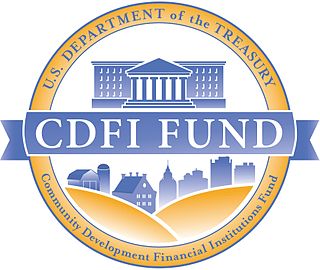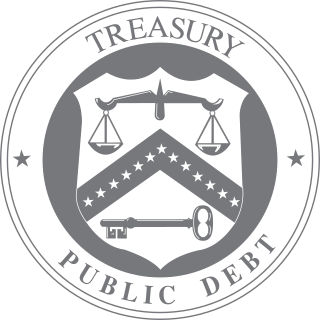 W
WThe Alcohol and Tobacco Tax and Trade Bureau, statutorily named the Tax and Trade Bureau and frequently shortened to TTB, is a bureau of the United States Department of the Treasury, which regulates and collects taxes on trade and imports of alcohol, tobacco, and firearms within the United States.
 W
WThe Community Development Financial Institutions Fund promotes economic revitalization in distressed communities throughout the United States by providing financial assistance and information to community development financial institutions (CDFI). An agency of the United States Department of the Treasury, it was established through the Riegle Community Development and Regulatory Improvement Act of 1994. Financial institutions, which may include banks, credit unions, loan funds, and community development venture capital funds, can apply to the CDFI Fund for formal certification as a CDFI. As of September 1, 2005, there were 747 certified CDFIs in the U.S. The CDFI Fund offers a variety of financial programs to provide capital to CDFIs, such as the Financial Assistance Program, Technical Assistance Program, Bank Enterprise Award Program, and the New Markets Tax Credit Program.
 W
WThe Office of the Comptroller of the Currency (OCC) is an independent bureau within the United States Department of the Treasury that was established by the National Currency Act of 1863 and serves to charter, regulate, and supervise all national banks and thrift institutions and the federally licensed branches and agencies of foreign banks in the United States. The acting Comptroller of the Currency is Michael J. Hsu, who took office on May 10, 2021.
 W
WThe Bureau of Engraving and Printing (BEP) is a government agency within the United States Department of the Treasury that designs and produces a variety of security products for the United States government, most notable of which is Federal Reserve Notes for the Federal Reserve, the nation's central bank. In addition to paper currency, the BEP produces Treasury securities; military commissions and award certificates; invitations and admission cards; and many different types of identification cards, forms, and other special security documents for a variety of government agencies. The BEP does not produce coins; all coinage is produced by the United States Mint. With production facilities in Washington, D.C., and Fort Worth, Texas, the Bureau of Engraving and Printing is the largest producer of government security documents in the United States.
 W
WThe Federal Financing Bank (FFB) is a United States government corporation created by Congress in 1973 under the general supervision of the Secretary of the Treasury. The FFB was established to centralize and reduce the cost of federal borrowing, as well as federally assisted borrowing from the public. The FFB was also established to deal with federal budget management issues which occurred when off-budget financing flooded the government securities market with offers of a variety of government-backed securities that were competing with Treasury securities. Today the FFB has statutory authority to purchase any obligation issued, sold, or guaranteed by a federal agency to ensure that fully guaranteed obligations are financed efficiently. As of September 2013 the FFB had $74.2 billion in assets and $69.6 billion in liabilities, for a net position of $4.6 billion.
 W
WThe Financial Management Service was a bureau of the United States Department of the Treasury and provided several financial services for the federal government. On October 7, 2012, Secretary of the Treasury Timothy Geithner issued a directive merging the FMS with the Bureau of the Public Debt to form the new Bureau of the Fiscal Service.
 W
WThe Office of Foreign Assets Control (OFAC) is a financial intelligence and enforcement agency of the U.S. Treasury Department. It administers and enforces economic and trade sanctions in support of U.S. national security and foreign policy objectives. Under Presidential national emergency powers, OFAC carries out its activities against foreign states as well as a variety of other organizations and individuals, like terrorist groups, deemed to be a threat to U.S. national security.
 W
WThe Office of Intelligence and Analysis (OIA) is a part of the Office of Terrorism and Financial Intelligence (TFI) of the United States Department of the Treasury responsible for the receipt, analysis, collation, and dissemination of foreign intelligence and foreign counterintelligence information related to the operation and responsibilities of the Treasury Department. The objectives of TFI include safeguarding the US financial system against illicit use and combating rogue states, terrorist facilitators, weapons of mass destruction proliferators, money launderers, drug kingpins, and other national security threats.
 W
WThe Bureau of the Public Debt was an agency within the Fiscal Service of the United States Department of the Treasury. United States Secretary of the Treasury Timothy Geithner directed the Bureau be combined with the Financial Management Service into the single Bureau of the Fiscal Service in 2012.
 W
WThe Office of Terrorist Finance and Financial Crimes (TFFC) is an agency of the United States federal government in the United States Department of the Treasury. Under the supervision of the Under Secretary for Terrorism and Financial Intelligence, the TFFC is policy development and outreach office for the Under Secretary and works across all elements of the national security community – including the law enforcement, regulatory, policy, diplomatic and intelligence communities – and with the private sector and foreign governments to identify and address the threats presented by all forms of illicit finance to the international financial system.
 W
WThe Office of Thrift Supervision (OTS) was a United States federal agency under the Department of the Treasury that chartered, supervised, and regulated all federally chartered and state-chartered savings banks and savings and loans associations. It was created in 1989 as a renamed version of the Federal Home Loan Bank Board, another federal agency. Like other U.S. federal bank regulators, it was paid by the banks it regulated. The OTS was initially seen as an aggressive regulator, but was later lax. Declining revenues and staff led the OTS to market itself to companies as a lax regulator in order to get revenue.